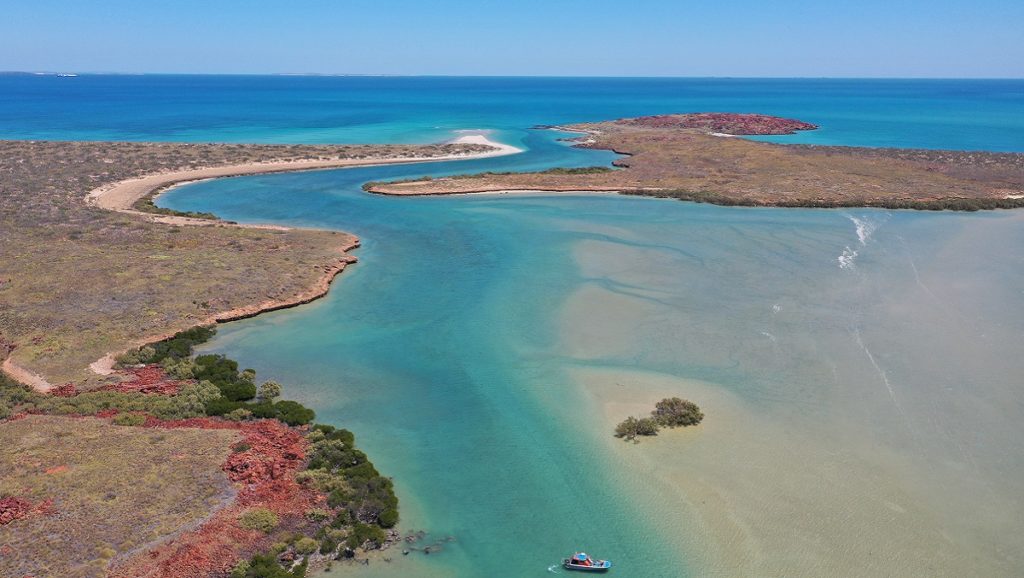The Australian story told beneath the sea

Submerged archaeological sites discovered off Australia’s north-western coast offer a new window into the migrations, lives and cultures of Aboriginals thousands of years ago, when the continental shelf was dry.
This was a time when around 20 million square kilometres of land was exposed, before the last glacial loosened its grip on the planet and melted ice drowned coastal areas – and large swaths of human history – under sea water.
In Australia alone, two million square kilometres were flooded, hemming back a third of the continent.
“You’re talking about a huge, expansive cultural landscape inhabited by Aboriginal people all over the country… which is just a blank, empty map”, says Jonathan Benjamin from Flinders University, lead author of a paper published in the journal PLoS ONE.
“So if you’re looking for the whole picture on Australia’s ancient past, you’ve got to look under water, there’s just no question.”
Yet the country’s appreciation for underwater archaeology is only just emerging, after taking off in Europe over the last two decades with a growing number of sites revealed in the Mediterranean, the Baltic and the North Sea.
This is a first for Australia – and the discovery was a leap of faith.
“It was a high-risk project,” says Benjamin. “There was no guarantee that we would make a discovery of this nature, and we did.”
His team, from universities across the country, set out to show that ancient Aboriginal sites could be preserved on the seabed, venturing into unexplored territory with divers, boats, aircrafts and remote underwater sensing technologies.
The Deep History of Sea Country project, in partnership with the Murujuga Aboriginal Corporation, revealed two submerged settings in Murujuga Sea Country off the Plibara coast around the Dampier Archipelago.
One site, at Flying Foam Passage, was estimated to be at least 8500 years old and bore evidence of human activity associated with a freshwater spring 14 metres deep.
The other was at Cape Bruguieres, with more than 260 lithic artefacts discovered up to 2.4 metres below sea level, dated to at least 7000 years old using radiocarbon and sea-level change analysis along with predictive modelling.
The artefacts included various food processing, cutting, grinding and muller tools – like a hammer stone and grindstone combined, which would have been used to grind seeds.
“So you start to see the kinds of activities and the ideas that people had in mind,” says Benjamin. “They weren’t just randomly bashing rocks together; they were creating a tool that was for a purpose, whether it be a scalloped edge scraper or a long knife or a core tool that could be used like an axe.”
One big surprise was the difference between the types of archaeological remains under water and those found on land, which clearly differentiates earlier and later cultures.
The sites might have belonged to the same people who created the world-renowned Murujuga rock art, a heritage listing currently up for reconsideration.
It’s hard to tie the two together with scientific evidence, says Benjamin. “But you’d have to imagine that the people who were there who left their stone tools on a dry land that is now submerged were also making rock art in the area because it goes back tens of thousands of years.”
These things matter to people today, even if they’re 40,000 years old, he adds.
“It matters in the way we protect sites, it matters in the way we create National Parks, it matters in the way we protect against destruction and development. So the marine environment, why would it be treated any differently?
“That should make some waves, if you pardon the pun, but it should change the landscape and the way that heritage practice and development-led archaeology is done in Australia.”
The preserved remains have vast potential. The sites could offer insights into how Aboriginal people dealt with changing climates during the last glacial. Present-day people might have a relationship with the sites from their ancestral heritage. And it could shift the timing of Aboriginal settlement back even further.
“Much of what we currently understand about Australia’s deep past is based on sites which are further inland,” says co-author Chelsea Wiseman.
“This study indicates the potential for Indigenous archaeology to preserve underwater, and that in some cases the artefacts may remain undisturbed for millennia.”
Benjamin says it’s an exciting step for Australia “as we integrate maritime and Indigenous archaeology and draw connections between land and sea,” which he hopes will continue “long after you and I are gone”.
“These new discoveries are a first step toward exploring the last real frontier of Australian archaeology.”
Originally published by Cosmos.

